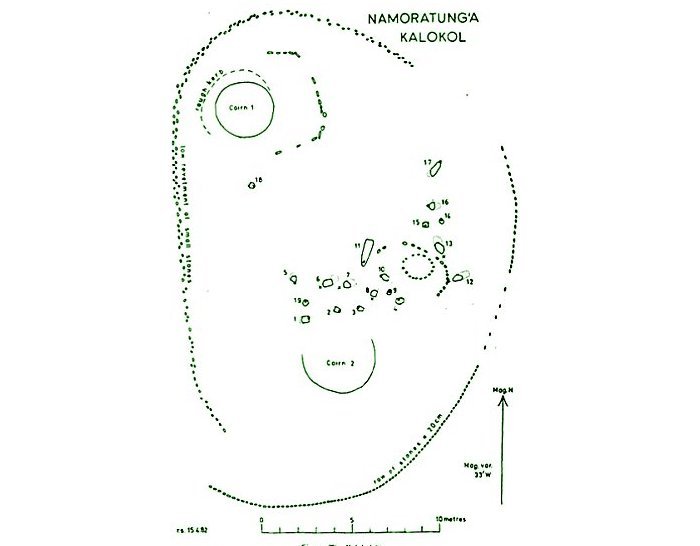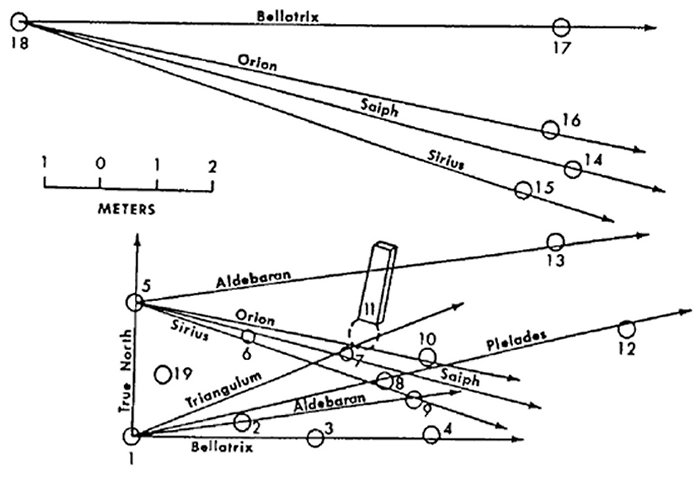Namoratunga – Kenya’s Fascinating Megalithic Site Oriented Toward Specific Stars And Constellations
A.Sutherland - AncientPages.com - There is a fascinating and entirely different megalithic site known as Namoratunga. The site is located on the west side of Lake Turkana in northwestern Kenya and is known as Namoratunga II (or the Kalokol Pillar Site), which means "People of Stone."
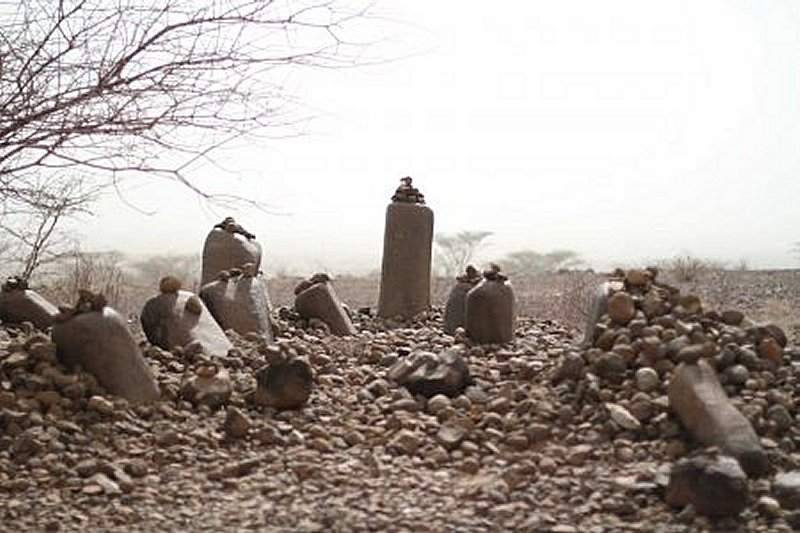 Namoratunga in Turkana, Kenya. Image credit: Darouet - CC BY-SA 4.0
Namoratunga in Turkana, Kenya. Image credit: Darouet - CC BY-SA 4.0
It has alignments of 19 basalt pillars that are nonrandomly oriented toward certain stars and constellations. Interestingly, modern eastern Cushitic peoples use the same stars and constellations to calculate an accurate calendar.
The old Kenyan site dates to about 300 BC and suggests a prehistoric calendar based on detailed astronomical knowledge was in use in eastern Africa.
Legends Surround Namoratunga
According to legend, the pillars (found by the archaeological team in 1978) were once men but became petrified by the devil after failing their test. One story tells about a woman who came one day to the place and was dressed strangely, according to the locals. She wanted to dance and told the gathering people not to laugh at her as she danced. But they did, and she turned them into stones. Another legend claims that the devil would play a song, and anyone who showed emotions hearing it would be turned stone.
Local tradition says that the largest pillar is a chief, who had tried to outwit the devil and, in his victory, forgot about the 'no emotion' rule and smiled only for the devil to turn him into stone. The name "Dancing Stones" (Namoratunga, in Turkana language) came from the legend that sheepherders living in the area used to go to the site to dance and sing cradlesongs.
These are probably only ancient legends regarding the ancient site of Namoratunga, but the locals have feared the place and never went there over the years. Also, children were warned against going to the area because it was filled with evil spirits.
Magnetic Basalt Pillars Aligned With Seven Star Systems
Radiocarbon analysis dates Namoratunga II, and a related burial and rock art discovered approximately 130 miles south at Namoratunga I to 300 BC. (Namoratunga I contains a similar grave but no pillars.)
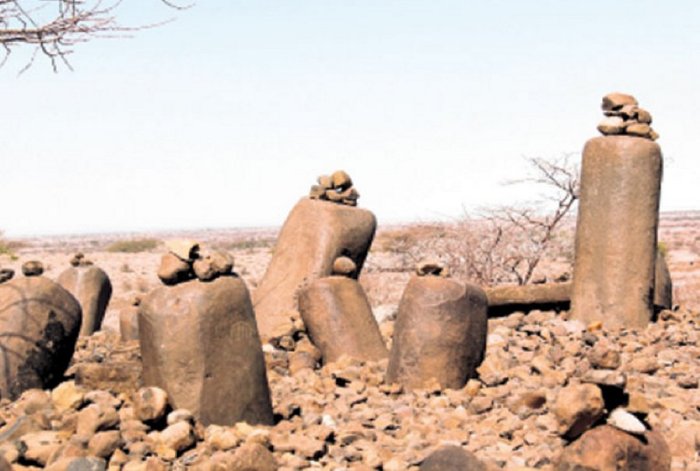 Namoratunga II. Image credit: Research drawing - image credit: Lynch, B. M., and L. H. Robbins. “Namoratunga: The First Archeoastronomical Evidence in Sub-Saharan Africa”
Namoratunga II. Image credit: Research drawing - image credit: Lynch, B. M., and L. H. Robbins. “Namoratunga: The First Archeoastronomical Evidence in Sub-Saharan Africa”
The site contains 19 magnetic basalt pillars, almost cylindrical, some tilted over, others fallen completely, and all arranged in rows forming a specific pattern. Each of the pillars has four facets and an inclined top. The pillars are aligned with 7 star systems: Triangulum, Pleiades, Bellatrix, Aldebaran, Central Orion, Saiph, and Sirius, and lean in different directions; their bases are littered with about 20,000 stones.
Namoratunga II. Image credit: Research drawing - image credit: Lynch, B. M., and L. H. Robbins. "Namoratunga: The First Archeoastronomical Evidence in Sub-Saharan Africa"
"The burial customs of the sub-Saharan people who used the cemetery resemble what is done today by the Konso, who live in the same general vicinity in southern Ethiopia. The calendar scheme of peoples related to the Konso may, in turn, help us confirm the intent of the builders of Namoratunga II. At the northern site, one setting of upright stones encircles a grave, like those at Namoratunga I, but the 19 other megaliths at Namoratunga II are arranged in an unusual pattern unconnected with any other burials." 1
The 12-Month 354-Day Lunar Calendar Of Cushitic Speakers Of Southern Ethiopia
At Namoratunga II, one setting of upright stones encircles an ancient grave, like those at Namoratunga I, according to research conducted by anthropologists at Michigan University, B. M. Lynch and L.H. Robbins.
Namoratunga II. Image credit: Research drawing - image credit: Lynch, B. M., and L. H. Robbins. “Namoratunga: The First Archeoastronomical Evidence in Sub-Saharan Africa”
The stones are placed relatively close to each other, separated at the most by 35 feet, usually less. Further, research states that Namoratunga represented an accurate and complex calendar system.
The late Mark Lynch (he died tragically as the victim of a hit-and-run accident in California in 1982) believed that the basalt pillars - surrounded by a circular formation of stones - link the constellations or stars to the 12-month 354-day lunar calendar of Cushitic speakers of southern Ethiopia.
Stone alignments relative to the seven stars at Namoratunga II. Image credit: Lynch, B. M., and L. H. Robbins. "Namoratunga: The First Archeoastronomical Evidence in Sub-Saharan Africa"
Alignments of the stones indicate the rising positions of bright stars – adapted to calendar keeping by ancient civilizations.
According to researchers, "the positions of key phases of the moon were intricately combined with zones of the sky that correspond to each star or asterism, in order of their use (Triangulum, the Pleiades, Aldebaran, Bellatrix, Orion's Belt, Saiph, and Sirius). Other months in a complex lunar cycle were coordinated with the position of the Triangulum with respect to staggered phases of the waning moon.
Stone alignments relative to the seven stars at Namoratunga II. Image credit: Lynch, B. M., and L. H. Robbins. “Namoratunga: The First Archeoastronomical Evidence in Sub-Saharan Africa”
The Konso speak a Cushitic language, and it is reasonable to believe the Namoratunga sites were erected by the ancestors of the present-day Eastern Cushities, who still employ a calendar now likely to be at least 7,000 years old. Namoratunga II is a modest site, relatively simple, with little there besides the alignments.
While it could have been used ritually, its layout and the diversity of its alignments seem more appropriate for systematic observation. Some of the same astronomical objects observed by the Namoratunga calendar keepers were used more than two millennia earlier by the Egyptian calendar priests. Richard A. Parker, a renowned authority on Egyptian astronomy and calendrics, established that the earliest Egyptian calendar was based on the moon and calibrated by the stars." 1
It is believed that the Namoratunga sites were erected by the ancestors of the present-day Eastern Cushites, who still live in this region of Africa.
Written by – A. Sutherland - AncientPages.com Senior Staff Writer
Updated on March 1, 2023
Copyright © AncientPages.com All rights reserved. This material may not be published, broadcast, rewritten or redistributed in whole or part without the express written permission of AncientPages.com
Expand for references- Krupp, E. C.. Echoes of the Ancient Skies
Lynch, B. M., and L. H. Robbins. “Namoratunga: The First Archeoastronomical
Evidence in Sub-Saharan Africa,” Science 200 (May 19, 1978): 766–768.
A monumental cemetery built by eastern Africa’s first herders near Lake Turkana, Kenya
More From Ancient Pages
-
 13,000-Year-Old Human Footprints Discovered In Canada
Archaeology | Mar 30, 2018
13,000-Year-Old Human Footprints Discovered In Canada
Archaeology | Mar 30, 2018 -
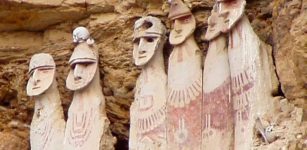 Genetic Evidence Reveals: Chachapoyas “Cloud People” Resistant To Inca Rule
Archaeology | Dec 14, 2017
Genetic Evidence Reveals: Chachapoyas “Cloud People” Resistant To Inca Rule
Archaeology | Dec 14, 2017 -
 Strange Tooth Raises Unexpected Questions About Human Evolution
Archaeology | Mar 24, 2022
Strange Tooth Raises Unexpected Questions About Human Evolution
Archaeology | Mar 24, 2022 -
 Mysterious Bronze Age Face Carved In Rock And Rare Artifacts Found In Kazakhstan
Archaeology | Aug 12, 2024
Mysterious Bronze Age Face Carved In Rock And Rare Artifacts Found In Kazakhstan
Archaeology | Aug 12, 2024 -
 Leprechaun: One Of The Most Famous And Powerful Creatures Of The Irish Faerie Folk
Celtic Mythology | May 8, 2016
Leprechaun: One Of The Most Famous And Powerful Creatures Of The Irish Faerie Folk
Celtic Mythology | May 8, 2016 -
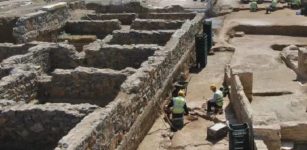 Tile Tomb Dated To The Late Hellenistic Era – Discovered In Surroundings Of Istanbul, Turkey
Archaeology | Jun 6, 2022
Tile Tomb Dated To The Late Hellenistic Era – Discovered In Surroundings Of Istanbul, Turkey
Archaeology | Jun 6, 2022 -
 On This Day In History: First US Ship To Trade With China, ‘Empress Of China’ Sails From NY – On Feb 22, 1784
News | Feb 22, 2017
On This Day In History: First US Ship To Trade With China, ‘Empress Of China’ Sails From NY – On Feb 22, 1784
News | Feb 22, 2017 -
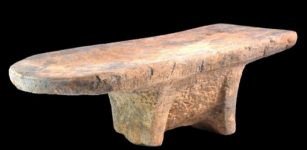 Evidence Of A 2,000-Year-Old Curry, The Oldest Ever Found In Southeast Asia
Featured Stories | Jul 25, 2023
Evidence Of A 2,000-Year-Old Curry, The Oldest Ever Found In Southeast Asia
Featured Stories | Jul 25, 2023 -
 Giant Balor Of The Evil Eye – Terrifying Fomorian King And Grandfather Of Celtic God Lugh
Celtic Mythology | Apr 30, 2018
Giant Balor Of The Evil Eye – Terrifying Fomorian King And Grandfather Of Celtic God Lugh
Celtic Mythology | Apr 30, 2018 -
 Sacred Hidden Buyan Island And The Mysterious Alatyr Stone With Healing Powers May Have Existed
Featured Stories | Mar 22, 2018
Sacred Hidden Buyan Island And The Mysterious Alatyr Stone With Healing Powers May Have Existed
Featured Stories | Mar 22, 2018 -
 How Did These Five Common Words Enter The English Language?
Linguistic Discoveries | Oct 28, 2024
How Did These Five Common Words Enter The English Language?
Linguistic Discoveries | Oct 28, 2024 -
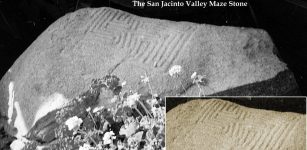 Baffling Prehistoric Maze Stones In Hemet And San Jacinta Valley, California
Ancient Symbols | Jun 24, 2016
Baffling Prehistoric Maze Stones In Hemet And San Jacinta Valley, California
Ancient Symbols | Jun 24, 2016 -
 Rings Of Moray – Sophisticated Irrigation System In Sacred Valley Of The Incas, Peru
Ancient Technology | Sep 11, 2015
Rings Of Moray – Sophisticated Irrigation System In Sacred Valley Of The Incas, Peru
Ancient Technology | Sep 11, 2015 -
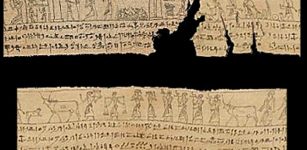 300 BC Mummy Shroud Fragment In NZ Finds Match In US
Archaeology | Jul 18, 2021
300 BC Mummy Shroud Fragment In NZ Finds Match In US
Archaeology | Jul 18, 2021 -
 What Fossils Reveal About Hybridization Of Early Humans – History Of Humankind Is More Complex Than Previously Thought
Archaeology | Sep 6, 2022
What Fossils Reveal About Hybridization Of Early Humans – History Of Humankind Is More Complex Than Previously Thought
Archaeology | Sep 6, 2022 -
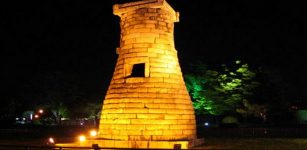 Cheomseongdae “Star-Gazing Tower” Is The Oldest Observatory In East Asia
Featured Stories | Mar 31, 2021
Cheomseongdae “Star-Gazing Tower” Is The Oldest Observatory In East Asia
Featured Stories | Mar 31, 2021 -
 Early Human Communication May Have Been Influenced By Changing African Landscape – Anthropologists Say
Evolution | Dec 28, 2023
Early Human Communication May Have Been Influenced By Changing African Landscape – Anthropologists Say
Evolution | Dec 28, 2023 -
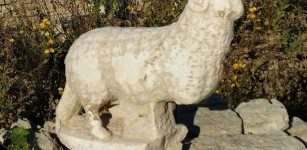 Impressive Marble Statue Of A Ram, An Ancient Christian Symbol For Jesus Discovered
Ancient Symbols | Dec 28, 2015
Impressive Marble Statue Of A Ram, An Ancient Christian Symbol For Jesus Discovered
Ancient Symbols | Dec 28, 2015 -
 Was Lailoken A Mad Prophet Or The Real Merlin Of Scotland?
Featured Stories | Sep 9, 2019
Was Lailoken A Mad Prophet Or The Real Merlin Of Scotland?
Featured Stories | Sep 9, 2019 -
 Migrants From Turkey And Greece Arrived In Britain Some 6,000 Years Ago
Archaeology | Apr 16, 2019
Migrants From Turkey And Greece Arrived In Britain Some 6,000 Years Ago
Archaeology | Apr 16, 2019

